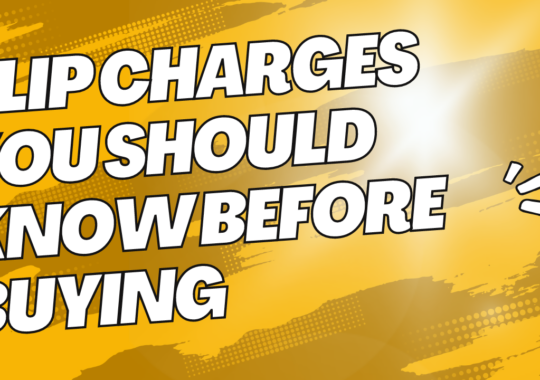Whole life insurance is a type of permanent life insurance that provides coverage for the insured’s entire life, as long as premiums are paid. Unlike term life insurance, which only covers a specific period, whole life insurance offers lifelong protection and includes a cash value component that grows over time.
Understanding Whole Life Insurance:
1. Lifelong Coverage: Whole life insurance provides coverage for the entire lifetime of the insured, as long as premiums are paid. This ensures that beneficiaries receive a death benefit regardless of when the insured passes away.
2. Premiums and Cash Value: The premiums for whole life insurance are higher than those of term life insurance but remain level throughout the policy’s duration. Part of the premium goes toward building cash value within the policy.
3. Cash Value Accumulation: A portion of each premium payment is invested by the insurance company, accumulating cash value over time. This cash value grows on a tax-deferred basis, allowing policyholders to access it through loans or withdrawals.
4. Tax Advantages: The cash value growth in a whole life policy is not subject to income taxes. Additionally, policyholders can take out tax-free loans against the cash value if needed.
5. Fixed Death Benefit: The death benefit of a whole life policy remains fixed and is guaranteed to be paid out to beneficiaries upon the insured’s death, regardless of when it occurs.
6. Dividends (For Participating Policies): Some whole life policies are participating, which means they are eligible to receive dividends from the insurance company. These dividends can be used to increase the death benefit, accumulate more cash value, or be taken as cash.
Benefits of Whole Life Insurance:
1. Lifelong Coverage: The primary advantage of whole life insurance is the lifelong coverage it provides. As long as premiums are paid, the policy remains in force, ensuring beneficiaries receive a death benefit upon the insured’s passing.
2. Cash Value Growth: The cash value component of whole life insurance grows over time, providing a savings element within the policy. Policyholders can access this cash value through loans or withdrawals for various financial needs.
3. Tax Advantages: The tax-deferred growth of cash value and the tax-free access to policy loans provide favorable tax benefits for policyholders.
4. Predictable Premiums: Whole life insurance premiums remain level throughout the policy’s duration, offering predictable financial planning.
5. Estate Planning and Wealth Transfer: Whole life insurance can be used as a valuable tool for estate planning, ensuring that loved ones receive a tax-free death benefit and providing liquidity for estate taxes or other expenses.
6. Dividend Earnings (For Participating Policies): Participating whole life policies have the potential to earn dividends, which can be used to enhance the policy’s benefits.
Death Benefit Payout:
The death benefit is the primary purpose of a whole life insurance policy. It is the amount of money that is paid out to the beneficiaries upon the insured’s death. Here’s how the death benefit payout works for whole life insurance:
1. Guaranteed Death Benefit: The death benefit of a whole life insurance policy is guaranteed and remains fixed throughout the policy’s duration, as long as the policy remains in force and premiums are paid. The beneficiaries are assured to receive the full death benefit upon the insured’s passing.
2. No Waiting Period: Unlike some other types of insurance policies, whole life insurance does not have a waiting period. If the insured passes away at any time during the policy’s duration, the death benefit is payable to the beneficiaries.
3. Tax-Free Death Benefit: The death benefit received by the beneficiaries is typically income-tax-free. This means that the beneficiaries do not have to pay federal income taxes on the proceeds of the policy.
4. Payout Options: The beneficiaries usually have several options for receiving the death benefit. They can choose to receive a lump-sum payment or opt for installment payments, which can be particularly useful for managing the proceeds over time.
5. Assigning Beneficiaries: The policyholder designates one or more beneficiaries who will receive the death benefit. It’s essential to keep beneficiary designations updated to ensure the proceeds go to the intended recipients.
Pros and Cons of Whole Life Insurance:
Pros:
1. Lifelong Coverage: Whole life insurance offers coverage for the entire lifetime of the insured, providing peace of mind that beneficiaries will receive a death benefit whenever the insured passes away.
2. Cash Value Accumulation: Whole life policies build cash value over time, which can be accessed through policy loans or withdrawals. This cash value growth can serve as a savings component and provide a source of funds for emergencies or future financial needs.
3. Tax Advantages: The cash value growth in whole life insurance policies is tax-deferred, meaning policyholders do not pay taxes on the cash value’s growth until they withdraw or surrender the policy. Additionally, policy loans are generally tax-free.
4. Stable Premiums: Whole life insurance offers level premiums that remain fixed for the life of the policy. This provides predictability and helps with financial planning.
5. Death Benefit Guarantees: The death benefit of a whole life policy is guaranteed, ensuring that the beneficiaries receive a payout regardless of when the insured passes away.
Cons:
1. Higher Premiums: Whole life insurance typically has higher premiums compared to term life insurance. The additional cost is partly due to the cash value component and lifelong coverage.
2. Limited Flexibility: Whole life policies offer less flexibility than other insurance types. Changing coverage amounts or premium payment schedules may be challenging or costly.
3. Complexity: Understanding the cash value growth and various policy features can be more complicated than with simpler insurance products like term life insurance.
4. Opportunity Cost: The returns on the cash value component of whole life insurance may not match other investment opportunities, leading some to consider other investment options instead.
5. Surrender Charges: Surrendering a whole life policy in the early years may incur surrender charges, reducing the cash value or potential payout.
Riders and Customization:
Whole life insurance policies often offer various riders and customization options, allowing policyholders to tailor the coverage to their specific needs and preferences. Here are some common riders and customization choices:
1. Accelerated Death Benefit Rider: This rider allows the policyholder to receive a portion of the death benefit if diagnosed with a terminal illness or critical illness, providing financial support during difficult times.
2. Guaranteed Insurability Rider: With this rider, the policyholder can purchase additional coverage at specified times or life events without undergoing a medical exam or proving insurability.
3. Paid-Up Additions Rider: This rider allows the policyholder to purchase additional paid-up life insurance coverage, increasing the death benefit and cash value accumulation.
4. Waiver of Premium Rider: This rider waives future premium payments if the policyholder becomes disabled and unable to work, keeping the policy in force without additional premium payments.
5. Term Insurance Rider: A term insurance rider adds temporary term life insurance coverage to the whole life policy, providing extra protection during periods of higher financial responsibility.
FAQs (Frequently Asked Questions) about Whole Life Insurance:
1. Is whole life insurance a good investment?
Whole life insurance can be considered a form of forced savings due to the cash value accumulation. While it offers a guaranteed death benefit and tax advantages, it may not provide the same returns as other investment options. Deciding if it’s a good investment depends on your financial goals and risk tolerance.
2. What happens if I stop paying premiums on my whole life policy?
If you stop paying premiums, your whole life policy may lapse, and the coverage will end. However, some policies have a grace period and automatic premium loans, which can prevent immediate lapses.
3. Can I borrow from my whole life insurance policy?
Yes, you can borrow against the cash value of your whole life policy through policy loans. The loan amount will be deducted from the death benefit if not repaid.
4. Can I convert my term life insurance into a whole life policy?
While you cannot convert a term policy directly into a whole life policy, some insurers offer conversion options that allow you to convert your term policy into a permanent policy, such as whole life insurance, without undergoing a medical exam.
Conclusion:
Whole life insurance can be a valuable financial tool for those seeking lifelong coverage, tax advantages, and a savings component. It provides a guaranteed death benefit and allows policyholders to build cash value over time. The tax-deferred cash value growth and potential for dividend earnings (for participating policies) offer attractive benefits for certain individuals.
Ultimately, choosing the right insurance coverage is a personal decision that depends on your unique situation and priorities. By understanding the features, benefits, and considerations of whole life insurance, you can determine if it aligns with your family’s financial strategy and provides the protection you need for the future.
Read More:
- Post Office Savings Account: Benefits and How to Open an Account
- 7 Simple Ways to Start Saving for a Bright Future
- How can I grow my savings fast?
- Saving Account: Types, Interest rates, and eligibility criteria




